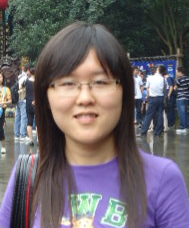A Novel Brain-Computer Interface Using A Multi-Touch Surface
We present a novel integration of a brain-computer interface (BCI) with a multi-touch surface. BCIs based on the P300 paradigm often use a visual stimulus of a flashing character to elicit an event related potential in the brain's EEG signal. Traditionally, P300-based BCI paradigms use a grid layout of visual targets, commonly an alphabet, and allow users to select targets using their thoughts.
Publication: CHI '10 Proceedings of the 28th international conference on Human factors in computing systems | full text (PDF)
Year: 2010
 Under the supervision of Prof. Anthony Steed and in cooperation with Arup, I am looking into large scale distribution of real-time 3D architectural geometry and network streaming while investigating the ad-hoc visibility and various culling methods trying to improve on the performance limiting the network bandwidth requirements.
Under the supervision of Prof. Anthony Steed and in cooperation with Arup, I am looking into large scale distribution of real-time 3D architectural geometry and network streaming while investigating the ad-hoc visibility and various culling methods trying to improve on the performance limiting the network bandwidth requirements.